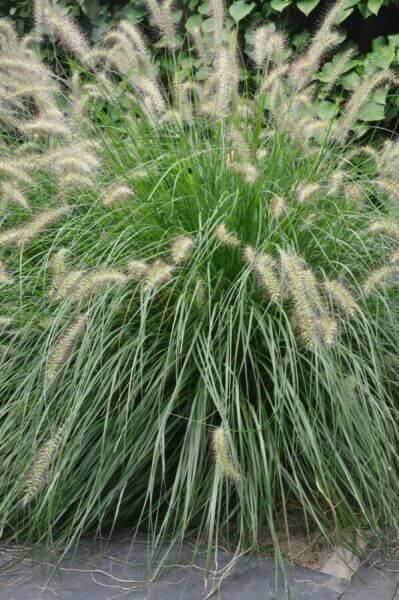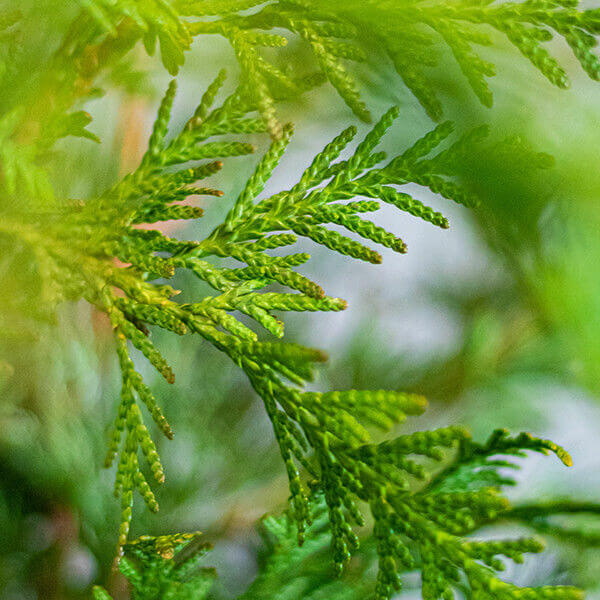Best Hedge Plants For Wet Soil
Fast-growing Hedge Plants
Enhance your garden's allure with rich hedge ranges such as Yew (Taxus), Thuja, Laurel, Photinia, and Bamboo, celebrated for their structural integrity and ecological benefits.
Yew and Thuja provide evergreen protection and winter season strength, while Laurel uses rapid development and broad, aromatic leaves.
Photinia adds seasonal appeal with its lively red foliage, and Bamboo lends a low-maintenance, peaceful atmosphere.
These hedges improve air quality, minimize noise, and create tranquil, personal areas.
Proper planting, spacing, and maintenance make sure energetic growth and environmental consistency.
Check out how these rich ranges can elevate your garden's beauty and well-being.
Secret Takeaways
Change Your Garden With Lush Hedge Ranges
- Select Yew for its thick, evergreen growth and unrivaled longevity.
- Select Laurel for its quick development and broad leaves, making sure quick privacy.
- Choose Photinia for its dynamic seasonal foliage, which turns a striking dark red.
- Use Bamboo for a low-maintenance, winter-hardy hedge with visual appeal.
- Area plants 2-3 per meter and prune regularly for optimal growth and health.
Popular Hedge Plants
When changing a garden with lavish hedge ranges, it's necessary to consider popular hedge plants such as Yew, Thuja, Laurel, and Photinia due to their unique characteristics and benefits.
Yew (Taxus) is highly esteemed for its longevity and dense, green development, making it a prime choice for withstanding landscapes.
Thuja is noted for its evergreen foliage and robust winter resilience.
Photinia adds seasonal vibrancy with red leaves that darken over time, creating vibrant visual appeal.
Laurel uses quick development and aromatic, broad leaves, suitable for quick privacy.
Additionally, Bamboo is an excellent choice for atmosphere, providing a low-maintenance, winter-hardy choice that enhances the garden's visual with its classy, swaying walking sticks.
These selections cater to a range of horticultural requirements and preferences.
Benefits of Garden Hedges
Garden hedges use a wide variety of benefits, making them a valuable addition to any landscape. These natural barriers are cost-efficient to carry out and offer significant wind defense, improving air circulation and adding to noise decrease. The thick foliage of hedges like Thuja and Beech guarantees privacy by blocking presence, creating a secluded and tranquil environment.
Hedges also play a vital role in microclimate guideline, offering a stable environment that cultivates plant growth and lessens temperature variations. Their elaborate leaf structures filter toxins, improving air quality and adding to a healthier garden environment.
Moreover, hedges stand out in noise decrease, absorbing and deflecting sound waves to lower ambient sound levels. This dual performance of supplying both visual and acoustic personal privacy improves the total serenity and visual appeal of any garden.
Planting and Upkeep Tips
For a successful hedge, precise preparation of the planting location is essential. Make sure the soil has appropriate pH and drain to support strong root development.
Space the plants properly for the chosen species. Water the hedge often throughout its preliminary development phase, adjusting as required with seasonal modifications.
Implement a methodical insect control and illness avoidance strategy, using organic or chemical treatments when essential. Frequently inspect for aphids, mites, and fungal infections.
Apply mulch to retain moisture and suppress weeds. Seasonal pruning promotes thick development and air blood circulation, necessary for plant health.
Following these standards will assist you cultivate a vibrant, properly maintained hedge that enhances the beauty of your garden.
Spacing and Trimming Guidelines
Spacing and Trimming Guidelines
Proper spacing and trimming are important for cultivating healthy, aesthetically appealing hedges. Sufficient spacing guarantees each plant receives sufficient nutrients, light, and airflow.
Follow these guidelines for optimal hedge maintenance:
- Spacing: Position hedge plants 2-3 plants per meter to encourage robust development.
- Pruning Strategies: Routine pruning is vital for preserving preferred hedge height and shape. Trim brand-new development in summertime and cut back older wood during winter season.
- Seasonal Care: Change cutting techniques and schedules according to seasonal requirements to guarantee plant health.
- Hedge Height: Regularly display and cut to maintain the wanted hedge height and achieve uniform aesthetics.
Following these steps will guarantee your hedge prospers, improving both the appeal and functionality of your garden.
Choosing the Right Hedge
Choosing the Right Hedge
Picking the suitable hedge involves examining elements such as mature height, foliage density, and ecological durability. Effective hedge plant choice requires comprehending each species' development qualities and site-specific adaptability.
For instance, Yew (Taxus) offers exceptional longevity and thick growth, while Thuja is notable for its winter season resilience. Additionally, thinking about maintenance requirements is vital; fast-growing species like Laurel or Privet need regular cutting, whereas low-maintenance options like Bamboo or Ivy may be preferable for those looking for minimal upkeep.
Ecological factors such as soil type, light schedule, and moisture conditions must likewise direct the choice process. This cautious technique ensures the selected hedges will grow, supplying both aesthetic and practical benefits to the garden landscape.
Shipment and Planting Advice
To guarantee your hedge plants grow, they should be delivered by specialized carriers and planted promptly upon arrival.
Follow these essential steps for effective planting:
- Soil Preparation: Improve the soil with organic matter to improve drain and nutrient material.
- Planting Depth: Create a trench twice the width and equal to the depth of the root ball.
- Watering Methods: Water completely after planting, keeping the soil consistently damp but not filled.
- Mulching: Apply a layer of mulch to retain moisture and suppress weeds.
Client Assistance and Service
Offered the crucial role of timely support in horticultural pursuits, our client assistance group is readily available six days a week through telephone, email, and social media to provide professional recommendations and promptly resolve any issues. Their devotion to fast action times makes sure customer satisfaction by dealing with inquiries associated with plant health, ideal planting techniques, and maintenance schedules.

Interaction Method
-------------------
Within 2 days
This extensive assistance system, enhanced by a stellar 9.3/ 10 customer score, highlights our commitment to improving the gardening experience for every single customer.
Regularly Asked Concerns
The Length Of Time Does It Consider Hedge Plants to Develop?
Hedge plants generally require one to three years to end up being totally developed, with the specific duration varying by types and growing conditions.
Reliable care throughout this important duration is vital for robust development. Constant watering, watchful weed control, and suitable fertilizer application are pivotal in promoting strong root development.
For instance, fast-growing types like Laurel might establish more quickly, while slower-growing varieties such as Yew may take longer. Thorough upkeep speeds up the establishment process, leading to thick and healthy hedges.
What Are the very best Hedge Plants for Privacy?
The concern of the very best hedge plants for privacy involves examining evergreen and deciduous alternatives.
Evergreen hedges like Thuja, Laurel, and Cypress offer year-round coverage, making sure constant privacy.
In contrast, deciduous hedges such as Beech use seasonal privacy, shedding leaves in colder months.
Secret upkeep suggestions for privacy hedges consist of regular cutting, fertilizing in spring, and appropriate spacing-- typically 2 to 3 plants per meter.
In addition, consistent watering and persistent weed elimination are important for promoting healthy, dense development.
Can Hedge Plants Draw In Wildlife to My Garden?
Yes, hedge plants can attract wildlife to your garden by supplying vital benefits like shelter, food, and nesting websites, consequently enhancing regional biodiversity. For instance, yew, holly, and laurel are exceptional for drawing in birds, while ivy supports a range of bugs.
However, it is necessary to note that there are some disadvantages, such as increased upkeep to handle bugs and routine upkeep. Thoroughly selecting and keeping hedge varieties can assist balance these downsides and benefits, ultimately cultivating a dynamic and sustainable community in your garden.
Exist Any Flowering Hedge Plants Available?
Yes, there are flowering hedge plants offered that can boost the beauty of your garden.
For instance, Elaeagnus, also understood as Olive Willow, produces aromatic white flowers in the fall, adding a touch of beauty.
Photinia, another popular option, showcases vibrant red leaves that mature into a rich green, developing a vibrant visual effect throughout the seasons.
To guarantee these plants Browse around this site grow, it's vital to practice appropriate pruning methods and seasonal upkeep, such as cutting brand-new growth in the summer and cutting back in the winter.
These steps will assist preserve the health and visual appeal of your blooming hedges.
How Do I Avoid Bugs in My Hedge Plants?
To avoid pests in hedge plants, employ natural pest control approaches and keep correct hedge care. Present helpful pests like ladybugs, which take advantage of damaging bugs, to develop a well balanced community.
Frequently check your hedges for indications of invasion and without delay get rid of any afflicted parts to prevent the spread. Guarantee the health of your hedges by using well balanced fertilizers and offering sufficient water.
Utilize mulching to retain soil wetness and correct spacing to decrease plant tension and promote robust growth. These practices collectively help in decreasing bug problems and preserving a healthy hedge.
Conclusion
In essence, choosing the right hedge ranges such as Yew, Thuja, and Laurel can transform any garden into a peaceful haven. These plants supply year-round greenery, boost visual appeal, and offer useful advantages like noise reduction and wind defense.
Correct planting methods, precise spacing, constant watering, and seasonal trimming are essential for ideal growth.
Reliable shipment services and expert client assistance guarantee a seamless experience from purchase to planting, making it easier than ever to elevate your outside space.
Garden hedges use a plethora of advantages, making them a valuable addition to any landscape. These natural barriers are cost-efficient to execute and supply substantial wind security, enhancing air flow and contributing to sound decrease. The dense foliage of hedges like Thuja and Beech makes sure privacy by blocking visibility, producing a remote and serene environment.

Pruning Strategies: Routine pruning is important for maintaining wanted hedge height and shape. Cut new development in summertime and cut back older wood during winter season.